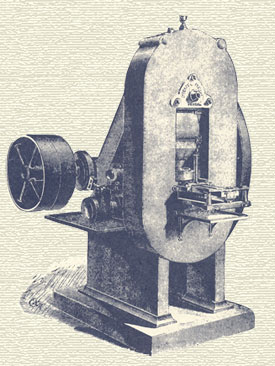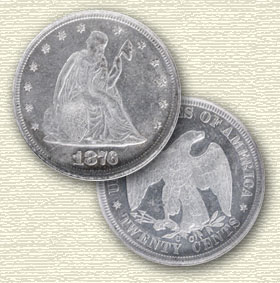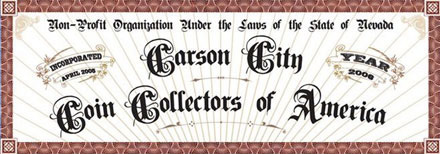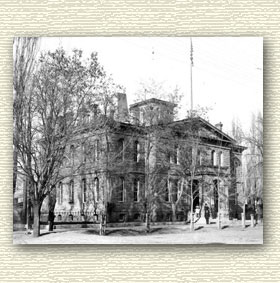
In 1870, just six years after Nevada entered the Union as the thirty-sixth state, the residents of that state's capital in Carson City, enthusiastically welcomed its new mint. The impressive sandstone structure immediately left an unforgettable footprint in the small western town with a population of less than 3,800.
President Ulysses S. Grant appointed Carson City's leading proponent and the man probably most responsible for it having a mint, Abraham Curry, as superintendent of the coinage plant. Curry oversaw production of the first coins ever minted in Carson City in February 1870 when silver dollars rolled off the solitary coin press. By the end of the year, the mint had produced a combination of gold and silver coins totaling 92,791 pieces and Curry had already vacated his position when he unsuccessfully ran in the state's lieutenant governor race.
In 1873, the Carson Mint experienced a most eventful year when bureaucrats in Washington, DC radically changed the nation's monetary system, resulting in different varieties of coins being produced. In 1876, the Carson Mint joined in the nation's celebration of its 100th birthday (which also coincided with peak production levels on Nevada's famous Comstock Lode), as more coins were struck than in any year in that mint's history.
The Carson Mint's most influential leader, James Crawford, who served as superintendent for ten years starting in 1874, died in 1885, and left a huge void in the mint's relationship with politicians back east. The mint remained closed under a Democratic administration led by President Grover Cleveland from the middle of 1885 until the fall of 1889. Coins once again began rattling off the mint's presses in October 1889 and continued to do so until the final death knell struck in spring of 1893, at which time coinage operations ceased for good.
Serving as an assay office from the middle of 1893 until the middle of 1933, the old Carson Mint building served as a historic reminder of Nevada's storied past for another generation. Finally, on the verge of demolition in 1939, a special-interest group spearheaded by Nevada's popular Judge Clark J. Guild, orchestrated the building’s acquisition on behalf of the state. In October 1941, Carson City proudly unveiled the Nevada State Museum, housed in the old Carson Mint building. Thousands of visitors have toured the grounds over the decades even as the value of the surviving coins once produced there have dramatically increased.
In the early 2020s, the most expensive surviving coin bearing the famed "CC" mintmark is worth approximately $3.5 million. It is the only known extant dime from an original output of 12,400 pieces struck in the momentous year of 1873. The highest profile coins from the Carson City Mint are the Morgan silver dollars, practically 2.8 million of which the General Services Administration (GSA) in Washington, DC, distributed in seven successive sales between 1972 and 1980.


